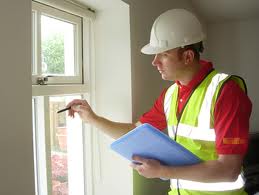“Snagging” is a widely used slang expression in the construction industry used to highlight a series of defects upon the completion of any building or construction work. It is used to define the process in which an inspection of a property takes place in order to draw up a list of minor defects or omissions after building work has taken place. This list will be reviewed and completed by the contractor.
Snagging is something that everyone should know about if they are building or working on a home. This can be working on a property from being a basic plot of land or even a luxury loft conversion.
What is a snag?
A snag is a little problem or defect which occurs once your building work has been completed. Typically, a snag refers to something which is damaged or completely broken. For example, something was not fitted properly or something may look unfinished; a missing hinge on the door, a scratched or cracked window, scuffed floor boards etc.
Whist it is the case that most snags are cosmetic, snags can also incorporate more serious defects that can come about from building work, such as things being smashed and major fixtures that are not fixed properly that become dangerous.
A snagging list
The point of a snagging list is to basically identify any faults and defects in your home for your contractor or house builder to sort out and rectify.
The snagging list is prepared and issued by an appropriate certification authority. This will usually be an architect, a contract administrator or an employer’s agent.
All of the faults that have been identified and written into the list must be rectified before a certificate of practical completion can be awarded.
The best time to make a snagging list is when your property is completed and it is ready to move into or back into. Usually, you will start the list preparations when you will be exchanging contracts with the housebuilder.
If you leave the list until after you have moved in, it may become harder to get the snags fixed as the housebuilder could claim that the problems were not there before, and they are clearly a result of you moving in. Moreover, it is simply easier for the contractor to work in an empty house, so avoid moving into your furniture before getting the list done – especially because you could still be held accountable because the furniture could have caused the snags.
Nevertheless, it is your right from two years from the date of completion to report any defects and faults and get the them fixed. In this time, your new house is still under warranty and therefore your housebuilder is under legal obligation to fix the problems in your home as part of the warranty agreement, which lasts for around 10 years typically.
How much will snagging cost my property?
Typically, you as the homebuyer will be expected to pay for the snagging list and repairs. However, you can try and pass on the costs involves onto the house builder by adding it to the purchase contract you have with him or her. This is something which may be covered by insurance provided that you pay your excess.

If it is the case that you do have to pay for it all, you should get quotes from at least three different companies to compare the pricing. This way you can make sure you are getting a fair and affordable price.
It is common for the price to start at around £250 for the services needed for a one bedroom house. So, for a four bedroom, expect a fee of £1,000 or over.
Can a house builder refuse to fix any problems on the snagging list?
It is true that a housebuilder is responsible for rectifying any issues with his or her new build in accordance with the standards which are set out by the warranty and their insurance provider.

However, the process of snagging can be subjective. For example, something you may see as a fault, the house builder could argue otherwise. Snagging is mainly about negotiating – you may not get everything you want out of the housebuilder, so prioritise the things that you will really push the housebuilder to put right.
To make the whole process easier, try and keep on good terms with the housebuilder. This way they will be far more lenient and willing to negotiate.
How you can check for snagging
So when you have just bought or fixed up your new home and there is no furniture or carpet, you can take the initiative to carry out a bit of a snagging test, as follows:
- Electrics – Are all the plug sockets working? Try take a phone charger with you to test them all out.
- Windows – Do all the windows close properly? Are there any draughts or breezes coming in?
- Doors – Are all the locks secure and working properly? Do all the doors close properly?
See also Snagging from The Guardian.


